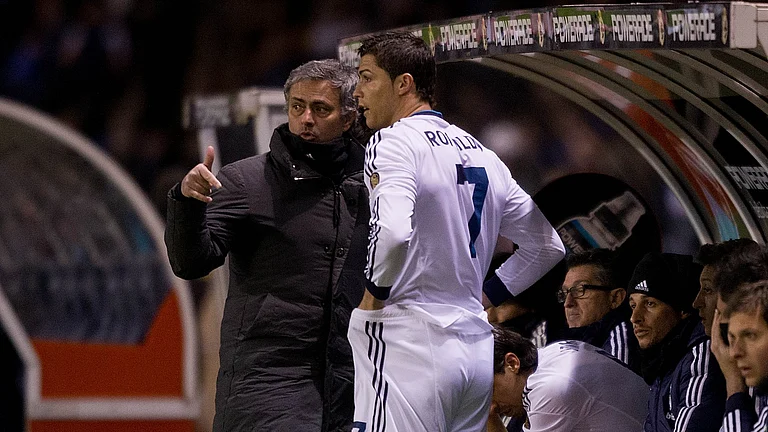Monkey Business
I first heard about the work of the psychologist Steve Peters whilst listening to Dave Brailsford explain the success of Team GB cycling. For Brailsford, it was essential that his athletes recognised the physiological response to stressful situations of the most primitive part of their limbic system, the so-called ‘inner chimp’, so that they could understand and manage their actions. The theories explained in ‘the Chimp Paradox’ are far reaching and have played a profound part in the preparation of many top-level sportspeople, but they also have the potential to improve performance in education where developing strategies for such occupational hazards as controlling exam nerves or public speaking are essential.
It has therefore been extremely instructive for me to have spent the last four years living alongside a group of thirty rhesus macaques. In 2020, we moved to Bishop Cotton School, Shimla, one of the oldest boarding schools in India situated in a mountain-top forested campus in the Middle Himalayas. We have two types of monkeys (pictures from my office window attached) with occasional visits from magnificent Himalayan Langurs. Initially this was a novel experience, my wife and I pointed out monkeys to every Indian we met and they kindly indulged our naivety with a bemused smile. However, experience has taught us that rather like a group of youths on a Saturday night after the bars close, monkeys, especially rhesus macaques, need to be treated with great care – certainly when their tail is up. Monkeys see you before you ever see them, they are primed to explode and they take advantage of any sign of weakness where food is concerned. They are also very scary if they need to be whether it is a warning screech or more worryingly a scratch or a bite. You do not want to be in a fight with a monkey.
As one of the Hindu gods is Hanuman, the monkey god, it is no surprise that our school community has found a way of living alongside the monkeys and anyway we recognise that our school is in their home. Essentially everyone at BCS has to learn about ‘the inner chimp’ of a monkey and very quickly they realise that you don’t confront a monkey unless you have to and if you treat them with respect you will usually be okay. Ultimately all really good preparation for when our boys enter the ‘human jungle’ outside the school gates.
It's not just cricket
When I took a group of Bishop Cotton School (BCS) students to the UK for a cultural trip in the summer, there was a moment when one boy commented that he hadn’t seen anyone playing cricket anywhere. We did go to Lords, the ‘Home of Cricket’ for a T20 match, but otherwise the real ‘Home of Cricket’, as he referred to England as a whole, seemed almost completely devoid of the game he assumed would be commonplace. This prompted me to try to explain the various challenges facing the future of cricket in the UK and how participation levels in most traditional team sports are falling significantly.
One of my key motivations to work and live in India was a lifelong passion for cricket and an assumption that I would find many others with a similar view here. That has proven to be the case and you can find cricket chat and action 24/7 on multiple tv channels. Most people, regardless of age or gender or background, have a degree of knowledge and enthusiasm for the game which is just on a different plane and explains why the phenomenon of the IPL continues to grow relentlessly. However, the most surprising thing to me is that the sporting question I get asked most, except when India are beating England, is ‘Who is better Messi or Ronaldo’?
Unfortunately, I am one of the least qualified people to answer this, but the fact is that in our school, cricket might be in the blood, but football is the game BCS boys love, and I think that is increasingly the case amongst young people across India. BCS has a proud footballing history and in the past our teams have competed in the Durand Cup – the equivalent of the FA cup. Every August, BCS hosts a senior football tournament which can be challenging for the participants given the quality of the pitches in the monsoons, but the junior footballers who appear are energetic, ambitious and highly skillful. In September, our U15 squad toured Thailand where we were hosted magnificently at Rugby School Pattaya and Wellington College Bangkok. On their beautiful grass pitches our boys were in football heaven and responded with some extremely entertaining and competitive play. If you think that the support for and commercial success of the IPL is big just wait until football finds its first world class players of Indian origin.
Ain’t no mountain high enough
It is the conker season in Shimla – huge mahogany chestnuts that would have been hard currency in my youth. Although the British tradition of conker fighting did come to India, it has all but disappeared, but their appearance this week reminded me of the Daily Mail ridiculing a primary school head for trying to manage the risk of conker fighting by insisting on the use of safety spectacles.
This story highlighted that risk management and corporate responsibility are integral to the job of school leaders. There isn’t an hour in the day when risk assessment isn’t being deployed, and a key question we should be asking is how much learning and character development is being stifled by the development of an overly controlled environment and risk averse mentality?
Conkers thrive in the mountains of Shimla (7000ft above sea level) which also offer unbelievable outdoor education opportunities. Every BCS boy engages with a number of activities which celebrate the landscape including the inter-house rock climbing event and the high rope obstacle course in our deodar forest. However, the pinnacle for many boys (literally) is to take part in the Class XII mountaineering expedition, founded in the 1990s, where a team of students train to summit one of the 20000 ft peaks that can be found in North India.
This August, as the team of six boys and three instructors traversed the 300 metre ice wall near the summit of Mentok Kangri I (6270m) one of the boys slipped and his fellow climbers lost their footing in the resultant domino effect. Their training kicked in and they were able to use their ice axes to slow the fall whilst the lead ropeman provided sufficient resistance for them to retrieve the situation. After a team meeting (on rope not zoom), a decision was taken to summit one peak only (Mentok Kangri has a series of peaks). One boy whose crampon had broken had to wait agonisingly just 100 metres below the top whilst his five batchmates completed the climb. The boys had all passed their Basic Mountaineering Course (ABVIMAS Manali) with flying colours, however, life at 20000 ft is challenging and fraught with danger. The boys universally consider this to have been the hardest mental challenge they have undertaken, but the confidence and sense of achievement they now have is palpable and they have joined a very select group who have climbed to such heights. A risk worth taking.





















